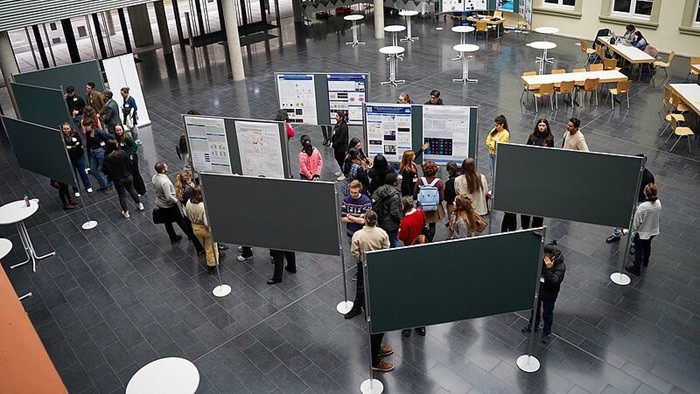To contribute to this field, I am working on a research project that combines cancer biology with bioengineering as part of the Elite Graduate Program “Translational Neuroscience”. There, I investigate the potential of 3D biofabrication models to better replicate the tumor microenvironment and improve our understanding of glioblastoma growth and treatment resistance.
Glioblastoma remains one of the greatest challenges in neuro-oncology, in part because conventional two-dimensional (2D) cell cultures fail to reproduce the cellular complexity and interactions of the tumor microenvironment. To address this, I explore the use of 3D biofabrication models - engineered structures made of hydrogels and biomaterials - that provide a more physiologically relevant environment for glioblastoma cells, neurons, and immune cells such as microglia.
In my work, I am establishing models that allow the study of tumor invasion, molecular signalling, and therapy response under conditions that more closely mimic the human brain. By using different hydrogels with different extracellular matrix protein compositions and structural designs, we aim to better capture the dynamics of glioblastoma progression and the role of intercellular crosstalk. This interdisciplinary approach bridges neuroscience, oncology, and tissue engineering, and strengthens my skills in both experimental and analytical methods.
This project is not only about scientific progress but also about personal growth. Working in such an interdisciplinary and international environment allowed me to exchange ideas with researchers from diverse backgrounds, which enriched my perspective on translational research. Outside the lab, I engaged with the academic community through seminars, discussions, and collaborations, all of which helped me build valuable connections and broaden my outlook on future scientific challenges.
The project deepened my fascination with the tumor microenvironment and clarified my interest in integrating neuroscience with bioengineering approaches. It also reinforced my motivation to pursue a PhD abroad, where I can further investigate innovative therapeutic strategies for glioblastoma using advanced in vitro models. Looking back, this experience was not only a key step in shaping my scientific career but also a defining moment that opened new opportunities for my future.
Text: Abhinav Singh, Elite Graduate Program “Translational Neuroscience”



